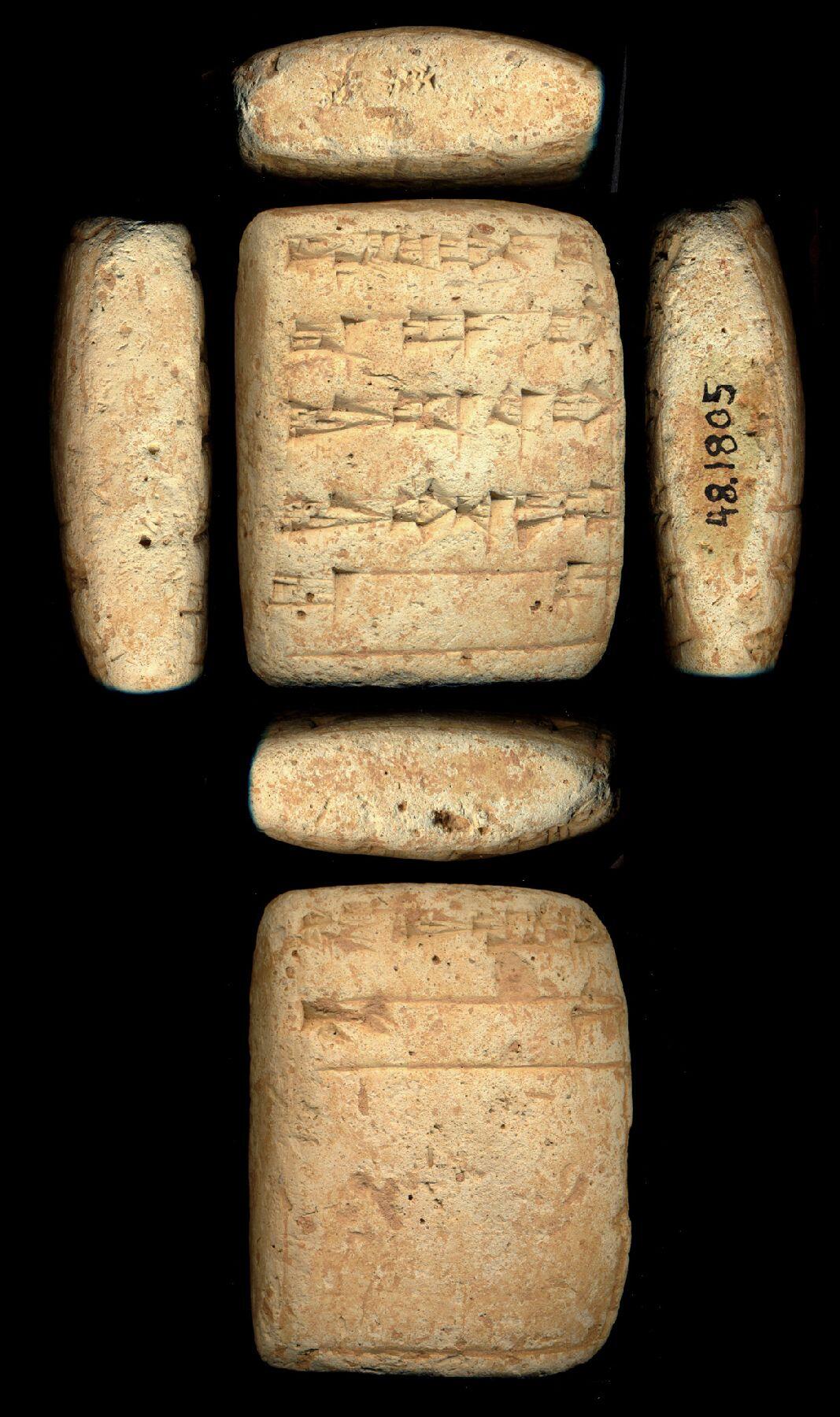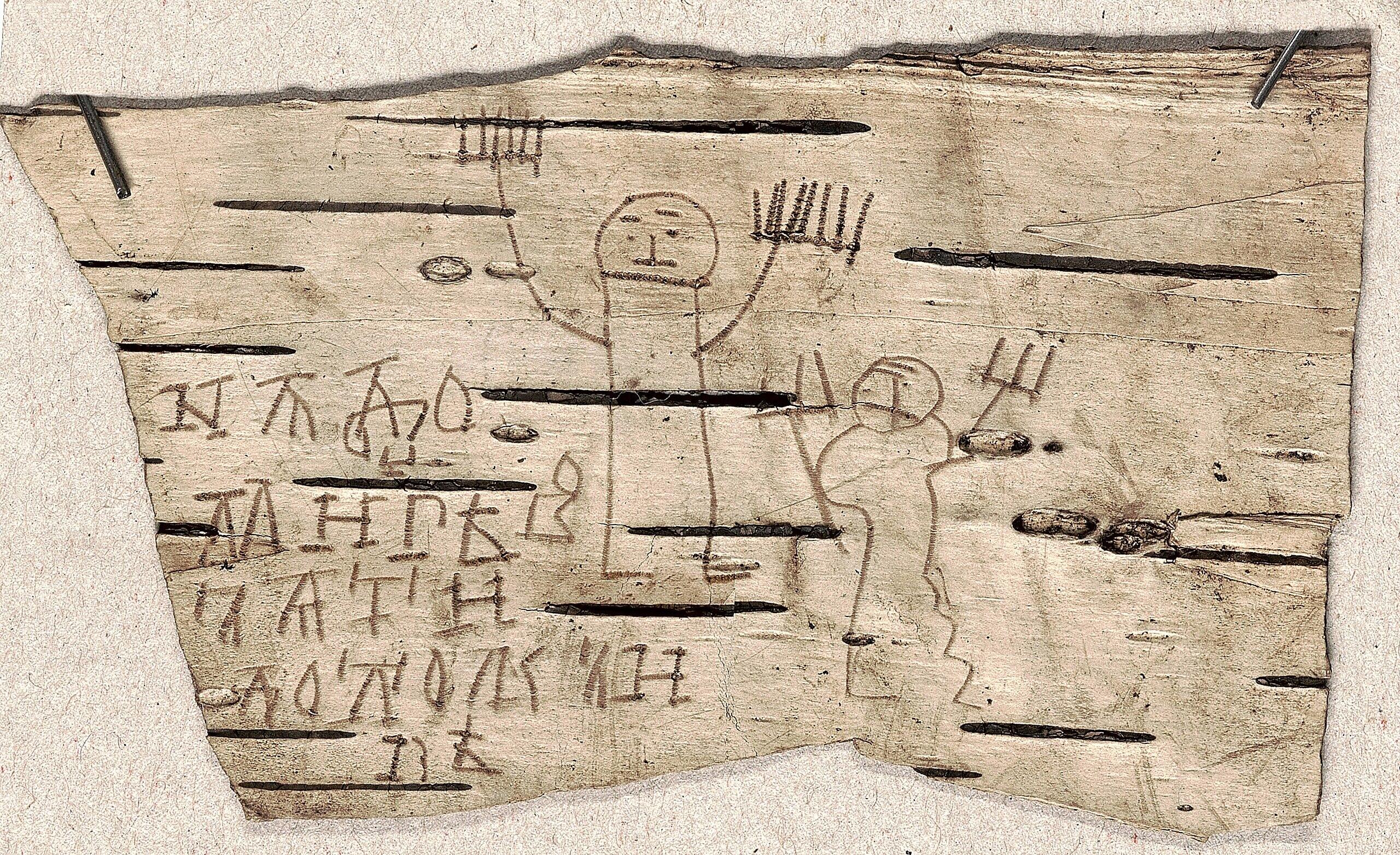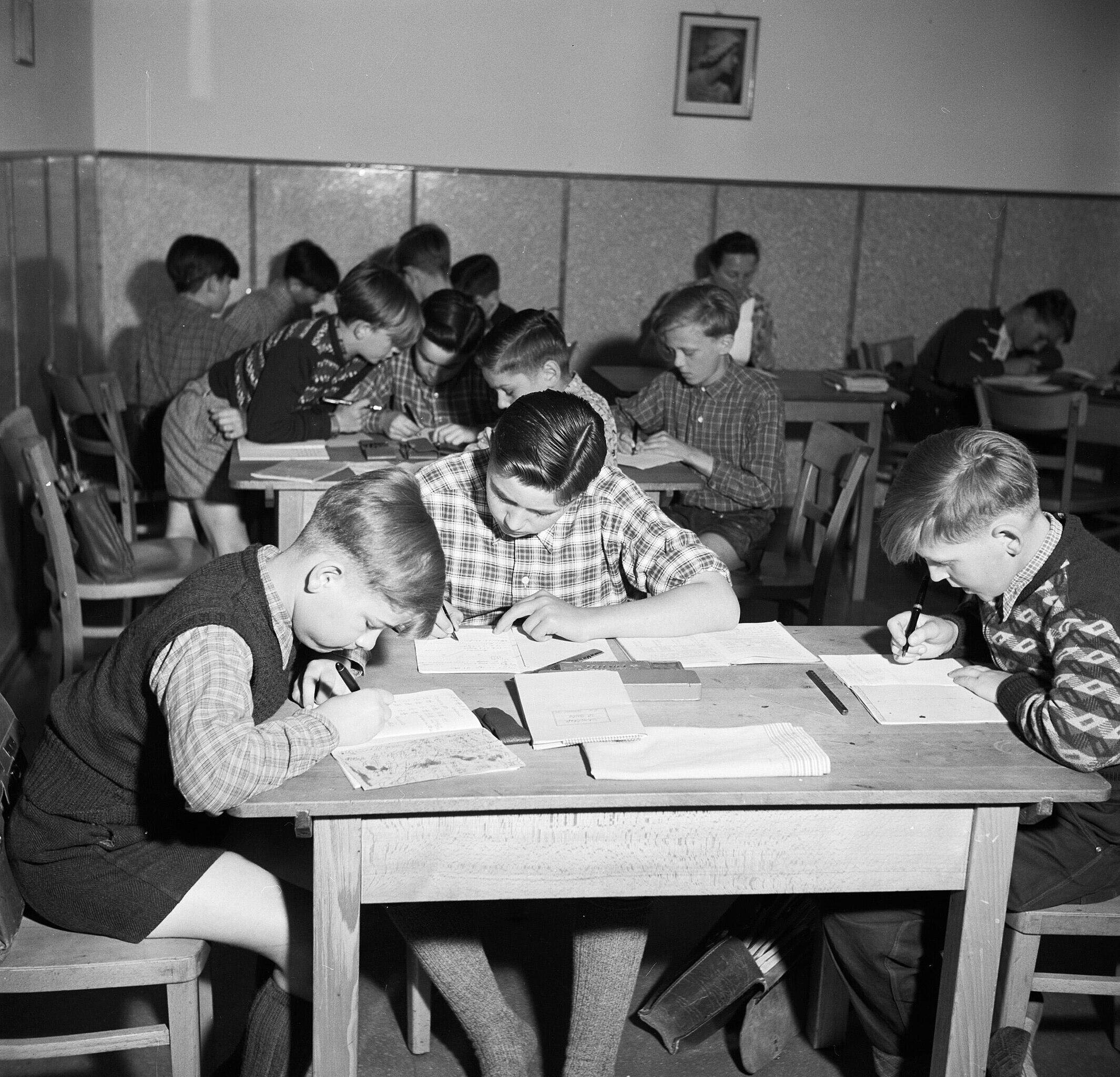Homework is far from a modern invention. Although the way it’s used today is unique to our time, the same was true for centuries past.
When was homework invented, and what did it look like for students learning in ancient times, in the early modern eras, and more recently? What does the future of homework look like? Discover more about the progression of homework through time.

A Brief History of Education
Long ago, formal education looked a lot different from what we are used to today. It’s unclear exactly when and where the first “schools” were established, but there is evidence of several different types of formal education in ancient civilisations.
In Sumer (ancient Mesopotamia), the eduba (tablet house) trained scribes.
Archaeologists have found thousands of clay tablets that were once students' practice work.
Pupils practised forming wedge-shaped cuneiform characters by copying texts repeatedly.
Likewise, Egyptian civilisation built a two-path system of educational development (scribes and priests).
From age 5, boys learned to read and write in rigid schools that emphasised drill and recitation.

In both Egypt and Mesopotamia, the chief methods of learning were memorisation, oral repetition and copying by hand.
In China, too, schooling began early: local schools and academies taught moral lessons from bamboo texts. Ancient Chinese education valued morality and duty to the state, and required students to recite moral teachings.
It's interesting to see how a society's culture influences its modern education!
In these societies, the idea of learning at home was natural: practising writing and recitations was part of a disciplined educational regimen even outside official hours.
Even when schools were informal or elite, as in medieval Europe or in classical Greece, teachers assigned “home study.” Wealthy Roman nobles were tutored privately and often expected to read aloud or memorise verses at home.
Homework was originally invented for purely practical purposes. Students needed to hone their knowledge and skills in order to be pivotal members of society. Later, it was more so that the population would be more thoroughly educated, understanding history and the humanities, maths and science, as well as self-development. Today, homework is intended to increase learning between classes (whether it achieves this goal is a different topic).
Medieval Islamic education had students memorising the Qur’an at home with help from parents.
In all cases, education was seen as life-long learning that extended beyond the classroom walls. In many cases, students never even learned in a classroom, instead being taught in more real-life situations.
Education in ancient societies emphasised cultural knowledge and history (including religion), agricultural and other practical sciences, and practical literacy. To varying degrees, physical education, arts and humanities, and military education were also emphasised. In many cases, importance was also put upon morality and self-development, especially from a standpoint that well-developed citizens make a better society.
Homework in Ancient Cultures
When was homework invented? It’s not possible to know exactly when the first homework assignment was given, but there are examples of homework throughout history.
In Mesopotamia, students copied complex texts onto their tablets. Egyptian students drilled geometry and hieroglyphs.
A famous example is Pliny the Younger in Rome: as a rhetoric teacher, he explicitly assigned his students to practice their speeches at home. Historians credit this as the first recorded instance of what can be considered homework.

In China, students made copies of sacred texts; one discovery of Dunhuang manuscripts revealed toddlers’ verses and Buddhist parables scribbled in pencil by monastery pupils.
Ancient homework was often oral or written practice: tasks consisting of speaking drills, calligraphy, recitation of poetry or multiplication tables. For example, Greco-Roman children used wax tablets to trace letters, while Chinese students wrote on bamboo strips or rice paper. The principal idea was to have students study, copy, and practise at home to improve their skills.
Proponents of alternative homework today are advocating for the evolution of homework to better suit modern society and our understanding of human development.
Who Invented Modern Homework?
Two figures stand out in creating the form of homework we recognise today: the German philosopher Johann Gottlieb Fichte (1762–1814) and the American reformer Horace Mann (1796–1859).
One of the most interesting facts about homework is that the modern version originated in the 18th century as a result of Prussia's military losses in the Napoleonic wars.
At the time, Prussia was creating a national school system (Volksschule) in an attempt to strengthen the country through standardised learning. Johann Fichte, often called the “father of modern homework,” helped design this nine-year compulsory educational system as a way to force patriotism into daily life.
Education should aim at destroying free will so that after pupils are thus schooled they will be incapable throughout the rest of their lives of thinking or acting otherwise than as their schoolmasters would have wished … When the technique has been perfected, every government that has been in charge of education for more than one generation will be able to control its subjects securely without the need of armies or policemen.
Johann Fichte, "Addresses to the German Nation"
To that end, Fichte, who made homework mandatory, used take-home assignments as a way to demonstrate that the state had the power to dictate your time and attention, even in your own home on your own time.
Under Fichte’s model, children practised what they were learning in class during evenings, reinforcing both the lesson and loyalty to the nation. The type of homework in this system focused mostly on rote memorisation rather than practical skills, intended to instil discipline and uniformity.
Many online sources cite Nevilis as the man who invented school homework as a punishment for underachieving students in either 1095 or 1905, depending on what you read. But these sources fail to cite any credible publications, and neither of the given years makes sense chronologically. He likely did not even exist.
Horace Mann, known as the “father of American public education,” encountered the Prussian system and, impressed, adopted its ideas. He returned to Massachusetts determined to reform U.S. education along similar lines. As secretary of Massachusetts’ board of education, Mann introduced graded classes, trained teachers, and the concept of homework for his common schools.
He believed that having children continue learning at home would raise academic standards. He also recognised the education template as a way to achieve underlying goals, including shaping loyal, disciplined, and patriotic citizens through mandatory state education, homework included.
Mann thus imported homework to America, making it a common feature of U.S. schools.
Over time, as schools expanded and grade levels became standard, this model of education and homework spread globally. Reforms in countries like Japan (the Meiji Restoration), France, and beyond established these learning elements as foundations in any ‘modern, civilised’ nation.
By the mid-19th century, it was common in many European countries as well as throughout the United States.
Contemporary Thinking on Homework
Attitudes toward the education system, learning, and homework have changed several times in each society in the past century.
In the U.S., it was seen as borderline child abuse, and was banned in California in 1901 and decried as child labour in the 1930s, but then embraced as a way to gain a competitive edge against the Soviets in the Cold War.
Finland, perhaps the most famous example of examining the system, gradually reduced assignments for younger students, believing in efficient school instruction instead. In 2016, the Finnish school system all but banned homework for early grades. They now use short, creative activities to spark children’s love of learning and hone their practical skills with tasks instead of relying on academic and classroom assignments.

Many researchers have worked to understand what makes the best pedagogy for modern students.
Studies show that homework can have some benefits but also notable downsides. On the positive side, well-designed assignments can reinforce learning and help older students build skills. A 2017 meta-analysis found that homework has a small effect on elementary grades but grows in value through higher grades.
One of the most important findings is that young children, about Year 6 and younger, should not receive any formal type of homework as it’s not appropriate for their learning development. Teachers can get young students used to thinking about school at home by taking inspiration from Finland and assigning small creative projects to encourage exploration instead.
In all instances, it’s important to assign high-quality homework. Poorly designed homework can overwhelm children, increasing stress and reducing valuable family or playtime. Research also shows that giving excessive homework with little educational purpose can widen achievement gaps: children who are slower at learning or have less support at home fall further behind under heavy homework loads.
In practice, teachers see both sides. Many agree that a modest amount of homework in middle and high school can be helpful. Educational organisations now recommend caution: assign homework only when it clearly reinforces instruction, and avoid overwhelming students.
Homework is in the midst of a revolution, with alternative homework being the main focus. Abiding by the rules of “less is more” and “quality is king,” some schools are exploring flipped classrooms, long-term projects, and volunteering, among other things, as new forms of homework.

The Future of Homework
How will homework practices evolve in the future? Until more classrooms adopt the current iteration of alternative assignments, the next steps will be rather unclear.
One thing that is easy to see in the near future is the possible wrench AI will throw into schooling. If utilised correctly, AI has the potential to evolve learning and new generations' knowledge to further heights.
In this view, traditional drill homework (skill practice and memorisation) may give way to process-oriented activities that emphasise creativity, problem-solving, and the learning process itself.
Homework may become more about independent study and parental insight: students might collaborate with AI tools to research topics or get explanations, while teachers focus on guiding understanding. Emphasis will need to be made on creating assignments that cannot be completed entirely by AI without any student thinking.
If and when alternative homework and/or AI-aware homework becomes more standard in classrooms across the world, we will be able to get a better understanding of the effects of that iteration of homework on students.
Education has evolved many times over the course of human civilisation, shaped by the requirements of society and the ulterior motives of those in power. As time progresses ever forward, educators will face the important task of inventing new ways to properly educate students, while convincing policymakers to get on board.
References
- AI and education: A new era of learning. (2024). In www.businessthink.unsw.edu.au. https://www.businessthink.unsw.edu.au/articles/generative-ai-artificial-intelligence-education
- ATTN:. Homework History. (2022). https://www.youtube.com/watch?v=u7cLX_-Um90
- Eduba: Schoools for Training Scribes in Ancient Mesopotamia. (2024). https://brewminate.com/eduba-schools-for-training-scribes-in-ancient-mesopotamia
- Education - Ancient Societies, Literacy, Pedagogy. (2025). In Britannica. https://www.britannica.com/topic/education/Education-in-the-earliest-civilizations
- Gershon, L. (2020). The Surprising History of Homework Reform. In JSTOR Daily. https://daily.jstor.org/the-surprising-history-of-homework-reform
- Haller, Josiah (2023). "Horace Mann, John Dewey, and “The State As Moral Educator.” https://crimsonhistorical.ua.edu/wp-content/uploads/2023/08/Haller-Done.pdf
- Homework. (n.d.). In Britannica. Retrieved September 28, 2025, from https://www.britannica.com/procon/homework-debate
- Margeson, M., & Spears, J. (n.d.). The History and Results of America’s Disastrous Public School System, Part I. In fee.org. https://fee.org/articles/the-history-and-results-of-our-disastrous-public-school-system-part-i
- Summers, E. (2019). Debunking Myths: No, “Roberto Nevilis” Didn’t Invent Homework. In Through Education. https://througheducation.com/debunking-the-myth-of-roberto-nevilis-who-really-invented-homework
- Youki Terada. (2025). The Pros and Cons of Homework (in 6 Charts). In Edutopia. George Lucas Educational Foundation. https://www.edutopia.org/visual-essay/the-pros-and-cons-of-homework-in-6-charts















